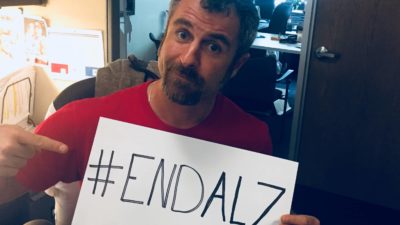Confusion has swirled around electronic manufacturer Foxconn Technology Group’s plans for a $10 billion campus in southeast Wisconsin that promised to bring 13,000 jobs — most of them blue-collar factory positions— to build high-tech display screens.
Wisconsin lawmakers offered up to $2.85 billion worth of incentives in 2017 to lure the world’s largest electronics manufacturer to the state, sparking criticism that the state was giving away too much money.
But Foxconn’s plans were thrown into doubt Wednesday when a company official said that the Taiwanese company was backing away from making LCD panels in favor of becoming a “technology hub” employing mostly research, development and design jobs. The company again shifted course Friday, saying it would return to earlier plans to make the LCD panels after a conversation between Foxconn’s chairman and President Donald Trump.
Foxconn’s contradictory statements triggered a flurry of finger-pointing among Wisconsin politicians this week.
In a joint statement, Wisconsin’s Republican Assembly Speaker Robin Vos and Senate Majority Leader Scott Fitzgerald defended the Foxconn incentive package they helped create.
A look at one of the claims made in their statement:
THE CLAIM: “Not a dollar would be paid out until jobs in the Foxconn development area were created. The incentive package is based on fulfilling the contract.” – Vos and Fitzgerald in a statement Wednesday.
THE FACTS: The claim is misleading.
Vos and Fitzgerald were referring to the state’s 15-year deal that provides Foxconn with roughly $2.85 billion if the company meets capital investment and job creation goals. The company did not meet its job creation projection of 260 employees last year, instead hiring 178 employees, and did not take its first eligible state tax credit worth up to $9.5 million. The state has not paid out job credits to Foxconn yet.
But the Republican leaders are leaving out tens of millions that taxpayers have spent on the project in other ways.
As part of the Foxconn legislation passed in 2017, the state agreed to give a $15 million grant to the village of Mount Pleasant, where Foxconn is slated to open its three-phase project. That money was disbursed to the village between November 2017 and June 2018, according to the state’s non-partisan Legislative Fiscal Bureau.
Mount Pleasant and Racine County officials agreed to spend as much as $764 million to help lure Foxconn to Wisconsin. So far, $190 million has been spent from the village fund dedicated to the project, according to public documents. (In 2017, Foxconn deposited $60 million into that account and will continue to make tax payments into the fund in future years based on its property value.)
Nearly $170 million of those funds were used to buy up land and relocate people from their homes to make way for the project, offering $50,000 per land acre and paying 140 percent of the appraised value for homes, according to village documents . Village officials have acquired roughly 82 percent of the 2,873 acres Foxconn wants to build on for its three-phase project. The remaining $20 million has been spent on financing, legal costs, as well as sewer and water infrastructure costs for Foxconn, village documents provided to the AP show .
That spending could also have repercussions for state taxpayers if the Foxconn project hits trouble.
As part of the Foxconn deal, Wisconsin legislators agreed to pay up to 40 percent of local government debt for the project, if asked to do so. Last year, the Legislative Fiscal Bureau estimated that for every $100 million local governments borrow and cannot repay for the Foxconn project, the state could be on the hook for as much as $64 million, once interest repayment is included.
The credit rating agency Moody’s Investors Service noted the state’s obligation on the Foxconn project in a statement Thursday, which forecasts financial risks for Mount Pleasant, Racine County and Wisconsin.
“They’re offering this commitment that if the village gets into trouble, (state officials) will do everything they can to ask the Legislature to appropriate monies to pay the debt service,” said Moody’s lead analyst Josh Grundleger.
Other costs to taxpayers are harder to quantify, said Steven Deller, an economist at University of Wisconsin-Madison. For example, the state has put manpower into crafting the deal and consulting with outside lawyers for the project.
“In terms of people hours, putting this package together — that’s incalculable — I don’t think they’ve been keeping track of how much staff time has been put into this,” Deller said.
___
Associated Press writer Scott Bauer in Madison contributed to this report.
___
Find AP Fact Checks at http://apne.ws/2kbx8bd . Follow @APFactCheck on Twitter: https://twitter.com/APFactCheck




